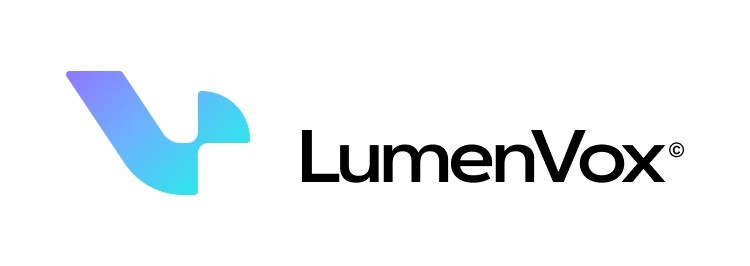
In the age of artificial intelligence, using deep learning software helps businesses solidify their industry presence. These solutions help businesses automate and simplify work operations and deliver faster, smarter, and better products and services.
Deep learning is integrated with a host of technologies that include speech-enabling software, facial recognition, virtual assistants, voicebots, and more. You won't run out of choices to suit your business needs.
What Is Deep Learning?
Deep learning software is an AI-powered solution that intelligently resembles the way humans gain knowledge and transform it into particular actions. Usually, it comprises statistics and predictive modeling to provide data-based insights. Because of its nature, it can power speech-enabling software, facial recognition, voice assistant, translations, vehicle vision dashboard, and more.
The process of deep learning software is similar to teaching a toddler how to recognize a word and its meaning. There's a hierarchy of algorithms that transform inputs (you teaching the word) into outputs in the form of a statistical model. This will go on until the output reaches an acceptable accuracy level. To achieve this, inputs reach layers and layers of processes. Hence, the word 'deep.'
What Are the Software Requirements for Deep Learning?
Software that uses deep learning is differentiated by having larger and more sophisticated neural networks, allowing computer systems to detect, identify, and act on complex situations faster than humans. But first, a deep learning software must be able to make sense of inputs; speech, sound, numbers, words, and other factors. These systems must be able to learn from any pattern recognition issues without the need for human intervention.
What Is the Best Software for Deep Learning?
As an emerging subset of machine learning, deep learning represents revolutionary progress in digital technology. In return, more businesses are incorporating this system into their offerings to automate workflows, streamline production and service, and gain profits. To give you a lineup of choices, here are our top 5 deep learning software solutions for 2022.
#1 LumenVox
In a world where voice technology can be expensive and hard to implement, LumenVox's affordable, future-proof voice technology meets customers' needs. As an industry-leading speech-enabling software provider, you can guarantee empowerment for the voices of your customers around the globe.

LumenVox is disrupting the speech recognition industry with its high-performing, accurate, and easy-to-implement portfolio of voice technology. To date, LumenVox has more than 2,000+ successful deployments, over 1 billion processed speech utterances, 20 billion voice-powered outbound notifications, and 1 million authenticated voiceprints. By providing an incredibly flexible and scalable technology stack, you can ensure that your customers will be heard and ultimately lower your total cost of ownership.

We have outlined LumenVox's key features and discussed why it is one of your business's best deep learning software choices.
Key Features
Automatic Speech Recognition:
LumenVox rapidly recognizes a variety of languages and dialects. Its deep neural network (DNN) architecture, coupled with LumenVox's dynamic ASR engine, allows for high accuracy and performance. Here are the main reasons why its ASR stands out from others.
- Provides an end-to-end DNN architecture
- Consists of state-of-the-art speech recognition processing
- Recognizes all dialects of a given language, so there is no need to manage multiple language dialect modes and no need for lexicons to support languages
- Accelerates the ability to add new languages and dialects to serve a more diverse user base
- Offers a modern toolset to not only tune applications but also migrate legacy applications to its ASR without requiring professional services
Additionally, most technology vendors do not present combinations of ASR, NLP, and NLU that you can choose from when building your voice-enabled solution. But LumenVox does.
Call Progress Analysis:
LumenVox's Call Progress Analysis (CPA) detects whether you have connected with a live person or an automated recording right away. It will only begin the message after a person pauses or if the answering machine tone has started. This feature has its competitive edge, which is the following:
- Advanced automated dialer accompanied by screening capabilities
- Intelligent voice-activity detection (VAD) algorithms and signal processing technology
- A next-gen AI-powered technology that interprets and distinguishes background noise from a human voice, a superior alternative to energy-based machine detection alternatives
- Maintenance of regulatory restriction compliance while taking advantage of predictive dialing
Voice Biometrics:
Utilize voice biometrics to improve both customer experience and security by seamlessly authenticating your customers over remote channels. This speech-enabling software offers both active and passive voice biometric authentication.
This technology creates a unique voiceprint by using physical and behavioral patterns of your customer's voice. Then it compares against all future calls from the same customer, whether they are interacting with a live agent or through an interactive voice response (IVR) self-service system.
Text-to-Speech:
Text-to-speech synthesis delivers information in the most natural sounding voices available. You choose the language and the voice, and it'll customize your solution for you. To coordinate with your brand, you can also integrate with other LumenVox products.
LumenVox has created and collected the best-in-class voice and speech technology that can power your apps and solutions effortlessly and economically. This speech-enabling software sets the standard for modular technology designed for flexibility. No doubt, this is the AI-driven voice recognition engine that you need to deliver the best customer experience for your business.
Pros
Offers a modular technology stack that consists of ASR, CPA, Voice Biometrics and Text-to-Speech
Has a container and microservices architecture with a unified API
Provides deep end-to-end learning ASR streaming transcription with all-dialect language models
Outstanding performance on accuracy where languages are relatively accurate out of the box, and there's a custom vocabulary support (or wordlists)
Has an out-of-the-box Integration with Natural Language Understanding AI intent engines
Superior technology for outbound dialers, thanks to its Call Progress Analysis (CPA)
Flexible deployment options: on-premises, in a hybrid model, or in the cloud
Provides end-to-end deep learning grammar ASR as well as easy migration of legacy grammars and tuner tool to troubleshoot grammars and SLMs
Cons
No freemium version is available, but you can request a demo to see how it works
Defining exceptional voice experiences through high flexibility, accuracy, and scalability, LumenVox is helping some of the world's largest cloud-first companies deliver exceptional customer experiences.
Are you interested in creating an exceptional voice experience for your customers? Request a demo or get in touch with LumenVox now.
#2 Neural Designer
When you research the deep learning software most professionals use, Neural Designer is often at the top of the list. It is a code-free app for building AI applications and data science software that offers quick business modeling. Among all AI-powered solutions, it's the most popular due to an array of intelligent attributes.

With this software, developers or even experienced professionals can build AI models using neural networks to distinguish patterns, identify relationships, make predictions, and set forth outcomes based on input data. Neural Designer works with common data file formats and offers various tools you will need to solve data-related problems.
Deep learning software's popularity can be attributed to its graphical user interface, making it easy and fast for users to build or run complex operations. It has the power to calculate approximate answers, classify data, forecast patterns, establish associations, and more. Consequently, this makes it ideal in industries like banking, healthcare, engineering, and more.
Key Features
Easy to use for experienced professionals
Provides high-performance computing
Advanced visualization and analytics
Recognizes unknown patterns easily
Integrates with other applications for seamless operations
Can offer data-based insights to boost business sales
#3 H2O.ai
H2O.ai is a free and open-source deep learning software that enables programmers, developers, businesses, and other professionals to easily create top-notch AI-based models and software. The platform supports common machine learning tools and statistical methods. Consequently, it can power up models capable of solving complex processes and identifying multiplex inputs.

In addition, the deep learning software platform is built from the ground up in Java. It can integrate seamlessly with other open-source technologies such as Apache Hadoop and Spark for greater flexibility and also connect your projects all at once. The platform boasts an intuitive and user-friendly interface that makes it simple and convenient to use.
H2O Flow allows users to build models by either using the interactive interface. All of this, without coding, makes it ideal for novices. Meanwhile, you can also choose different programming languages, whichever you see fit, such as R, Python, HTML, SQL, and more.
Key Features
Creates AI-based models, software, and application easily
Comprises machine learning tools and statistical models
Can solve complex business processes and identify inputs
Integrates with other open-source technologies
Frontlines an interactive and intuitive user interface
No coding required; suitable for junior programmers
Lets you choose your preferred programming languages
#4 Dragon Professional
Despite being released only in 2016, Dragon Professional by Nuance is yet another speech-enabling software that aids in speech synthesis for individuals and businesses alike. Dragon allows you to compose and edit documents by voice and use it for transcribed audio and for browsing the web. Like most speech-to-text apps, it can also convert recorded audio to text.

As the speech-enabling software adapts to your voice, Dragon becomes more "intelligent" over time and can expand its extensive base vocabulary by adding your own words. It works well with a wide range of applications and is compatible with a wide range of speech recognition software.
Dragon is at its best when used in live dictation mode. In this feature, you can write an email or document hands-free. You can do it flawlessly through extensive navigation, correction, formatting, and punctuation commands. The software can also be used to transcribe existing audio recordings. But one setback is that it cannot generate neatly formatted text.
Despite its shortcomings, you can give Dragon's high accuracy rate, broad vocabulary, and wide range of commands credit. Hence, these make it an excellent pick for businesses in need of speech-enabling software.
Key Features
Applicable for both professional and personal purposes
Helps in creating, transcribing, and recognizing documents
Customization options for your pool of vocabularies
It can be in sync with other Dragon apps for a joint workplace
Secured enough to handle legal documents
#5 Deep Vision AI
Moving forward from speech-enabling software and AI-based applications, another notable deep learning software is Deep Vision AI. This AI-enabled technology uses images and videos to detect and recognize faces. It can pinpoint locations of faces and perform facial matching to locate targeted subjects. It can also help with gathering its subjects' demographic information.

Besides detecting images on point, this deep learning software can also take a look at objects like brand logos appearing in videos and images, household items, and even vehicles. This application lets you view vehicles from any angle, providing you with exterior and interior views.
In addition, the application can be used to give context to images through automatic tagging. However, the correct result isn't always given. For that reason, a confidence score will be generated once the context has been predicted.
With Deep Vision AI, you can find visually similar objects within your images using its visual search tool. Simply upload your image gallery to find pictures, then it will return images that are most similar, accompanied by an automated similarity score.
Key Features
Accurately detects images and videos
Can also identify assumed locations based on detected faces
Performs facial matching to locate particular individuals
Provides demographic info
Captures specific details about objects
Finds similar images of your chosen objects
Final Verdict
Similar to its term, deep learning software helps you gain an in-depth understanding of your customers. By collecting data and identifying patterns over time, this software can leverage human inputs and help in two major ways: developing a more customer-tailored product and improving your marketing efforts.
Over time, deep learning software has become a significant driver of corporations, boosting not just customer loyalty but also profits.




